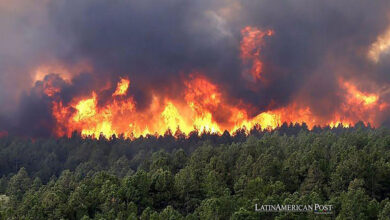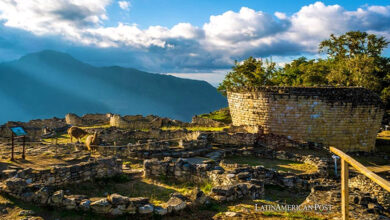How many visitors can a protected natural area host?
What is the admissible number of visitors to a protected natural area? .

Regulation of the number of visitors to a natural area is important to ensure preservation goals. / Photo: Pexels
LatinAmerican Post | Jorge Guasp
Listen to this article
Leer en español: ¿Cuántos visitantes puede acoger un área natural protegida?
In livestock, the number of animals that can host a site is limited by the natural resources used for grazing. But when we talk about tourism and human beings, who do not consume these resources directly, what is the admissible number of visitors to a protected natural area?
Load Capacity vs. Acceptable Limit of Change
Carrying capacity is a concept that comes from livestock, and refers to the number of animals (usually per hectare or another surface unit) that a habitat supports, so that livestock are adequately fed and the pasture, or other vegetation, do not suffer irreversible degradation. This concept has been transferred to tourism, in order to determine the maximum number of visitors that an area can receive without putting its natural resources at risk.
The limitation of the concept of carrying capacity, however, is that humans do not use the resources for food, but for recreational purposes and on a voluntary basis. Therefore, the consequences of tourism on natural resources depend not only on the number of visitors, but also on their behavior, how people distribute themselves, the characteristics of the substrate through which they transit, and other factors.
For the reasons cited, the US Forest Service developed, in the 1980s, the concept of LAC (limit of acceptable change, in English), or LCA (limit of acceptable change), for the management of wilderness areas.
“LCA is based on the fundamental concept that change (impacts on resources and / or the visitor's experience) is inevitable as a result of human activities. What is important is how much and what kind of change is acceptable ”(The Development of Public Use Programs based on the Limits of Acceptable Change in Protected Areas, Center for Management of Protected Areas, Colorado State University, USA, 2015).
Also read: Coyotes, a threat to South America
This scheme includes three key aspects: a) measuring the environmental effects of tourism activity; b) include in them the analysis of the visitor experience; c) zoning the area of use, based on its degree of naturalness and the recreational opportunities it provides.
What is the Acceptable Limit of Change scheme?
The LCA is based on the measurement of indicators, that is, of factors that reflect a certain situation, and that can be easily measured. The depth of the ground of a trail, for example, reveals the degree of erosion caused by the transit of visitors. In this case, the depth of the soil (at fixed monitoring points) is the indicator that there is an erosion situation as a result of trampling. As an example of an indicator of a social situation, we could mention the level of satisfaction of visitors with respect to the information received; in this case, the standard would establish a certain percentage of visitors satisfied with that service, and it would be evaluated through a survey within the protected natural area.
What to measure, how often to do it, and how to carry out the evaluation depends on several factors: the purpose of using the LCA, the available personnel and their degree of experience, the number of visitors the natural area receives, the management objectives, etc.
Determination of standards and management measures
A standard is a value that, in this scheme, is considered acceptable for a certain indicator . For example, we might consider a given amount of waste per unit area in a camp site acceptable, or a certain loss of soil by erosion at certain fixed trail monitoring points. If in the measurement of the indicator the standard established as acceptable is exceeded, it is possible that this value is too strict, and we must raise it to adapt it to reality.
The option of adopting management measures may also arise in order to achieve the proposed standard. Continuing with the case of garbage in a camp, to bring the indicator (of waste dispersion) to an acceptable standard (a certain amount of waste) we could introduce, for example, one of the following measures: reduce the number of campers (for less waste); put up informative posters and educate campers (so that they throw less garbage in the camp, and know what to do with the waste); or install more waste containers (to persuade visitors to use them).
Also read: A carbon sink shrinks in the Arctic
Once any of these measures is put into practice, the cycle begins again: the standards of each indicator are evaluated, it is determined if the conditions are acceptable, and eventually new management measures are introduced, so that each area of the protected natural area maintains the expected environmental and social conditions.
Development of social and environmental conditions, regardless of the number of visitors
It goes without saying that this is a simplification of the LCA process, which is complex and involves the need for agreements about the desired driving conditions. As will be seen, the emphasis is not on determining the maximum allowable number of visitors, but on measuring and managing the negative effects of their presence. Even so, when management measures (including visitor education) are not sufficient to achieve the expected environmental and social conditions, it is possible to resort to reducing the number of visitors.
The LCA is a flexible system, which aims to achieve management standards appropriate to the conservation objectives of the natural area, and also to the satisfaction of visitors, since it seeks to prevent the deterioration of nature and promote its enjoyment by of the society.




